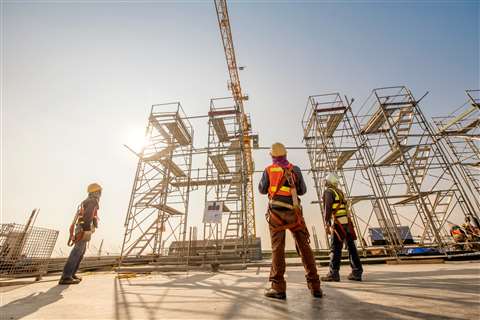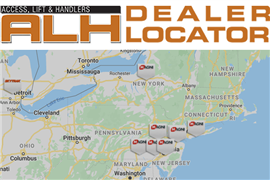Competent? Qualified? Engineer?
21 June 2022
Industry veteran David Glabe breaks down common – yet sometimes misunderstood – scaffold and access industry terms.
Three words, that’s all they are: Competent. Qualified. Engineer. Despite only being three words, they have a huge impact on the business of scaffolding and mobile elevating work platforms (MEWPs.) How so?
These three words are found in regulations, standards, codes and manufacturers’ recommendations. They have the most influence when used in mandatory regulations, such as the federal Occupational Safety & Health Administration (OSHA) regulations. Unfortunately, the terms are not always understood by those who use them, particularly when attempting to understand and apply the regulations.
 (Photo: Adobe)
(Photo: Adobe)
The term “competent” is frequently used incorrectly simply because the individual using the word doesn’t recognize the ramifications of that use. There is a person who is competent and then there is the competent person. An employee who does not appreciate the significance of the word competent will, when asked, declare that he is a competent person when in fact he means that he is only competent.
On the other hand, his fellow employee will, when asked the same question, acknowledge that while she is competent, she is not the competent person. Can you be competent but not a competent person? Can you be a competent person but not competent?
The Oxford dictionary defines competent as a person “having the necessary ability, knowledge or skill to do something successfully.” That’s quite succinct: You must know your stuff. As for a competent person, to paraphrase OSHA’s definition, a competent person must be able to recognize the hazard and have authorization to eliminate the hazard. (See OSHA 29 CFR 1926.450 for the precise definition.) The difference is in the authorization. While many are competent, only a few are given the authorization. Therefore, is it not reasonable to state that a competent person must also be competent but a person who is competent isn’t necessarily a competent person? Think about it.
Comes now the word “qualified.” Turning again to Oxford, the definition for qualified is someone who is “officially recognized to being trained to perform a particular job.” OSHA’s definition is more specific. In general terms, OSHA states that qualified means one who either has a certificate, degree or professional standing, or, who has extensive knowledge, training, and experience. But wait, there’s more. The qualified person must be able to demonstrate an ability to solve or resolve problems related to the work. (See OSHA 29 CFR 1926.450 for the precise definition.)
Is there a difference between a competent person and a qualified person? According to OSHA there is. The primary difference is that a competent person may be able to identify a hazard but may not have the knowledge to determine a solution in order to mitigate the hazard; the qualified person can give the competent person that solution.
Bring in the engineer
Certain regulations require the expertise of a qualified Professional Engineer because there are times where verification of knowledge and experience is required.
When a Professional Engineer is involved, this is your verification that the individual has the training and expertise to perform the task at hand. Here is why: To claim to be a Professional Engineer, the individual must be licensed in the state or province where the work is being performed. To get a Professional Engineering license, the engineer must have an accredited degree in engineering, must successfully pass two exams, and have more than four years of experience. Furthermore, the Professional Engineer agrees to abide by a strict Code of Ethics. This is serious stuff and is meant to be so that you can be assured that the work being performed by the Professional Engineer is accurate and can be relied upon.
So, there you have it: A competent person can recognize scaffold hazards and has the authority to do something about it. The qualified person has the ability to provide solutions. The Professional Engineer has additional expertise and licensure that verifies accurate solutions. The impact on the regulations is significant. A review of the OSHA regulations, American National Standards, and SAIA Codes illustrate this impact.
OSHA requires that all scaffolds be inspected prior to each workshift by a competent person, that is, an individual who can identify hazards and has the authority to do something about it. OSHA requires that all scaffolds shall be erected, dismantled or modified only under the supervision of a competent person, qualified in scaffold erection, dismantling or modification.
OSHA requires that all scaffolds shall be designed by a qualified person, an individual who can demonstrate the ability to design scaffolds correctly.
In certain instances, the design of scaffolds requires the expertise of a Professional Engineer, such as for tubular welded frame scaffolds exceeding 125 feet in height. Since that regulation also requires that the scaffold be constructed and loaded in accordance with that design, this means the scaffold erector and user must be trained.
And who does the training? A qualified person. It has been argued, and legitimately so, that training is the most important aspect of ensuring the safe use of scaffolds and MEWPs. In fact, the regulations require that the training be conducted “by a person qualified in the subject matter to recognize the hazards.”
Here, the problem is in ascertaining whether the instructor/trainer is qualified. The disappointing reality in the scaffold industry is that too often training is offered by those who have marginal qualifications to do so. Since there is no licensing program that verifies the instructor is qualified, be sure to carefully choose your instructor.
And here is one final thought: To determine if another individual is competent, do you not yourself have to be qualified?
MAGAZINE
NEWSLETTER
The gold standard in market research
Off-Highway Research offers a library of more than 200 regularly updated reports, providing forensic detail on key aspects of the construction equipment industry.
Our detailed insights and expert analyses are used by over 500 of the world’s largest and most successful suppliers, manufacturers and distributers, to inform their strategic plans and deliver profitable growth.







